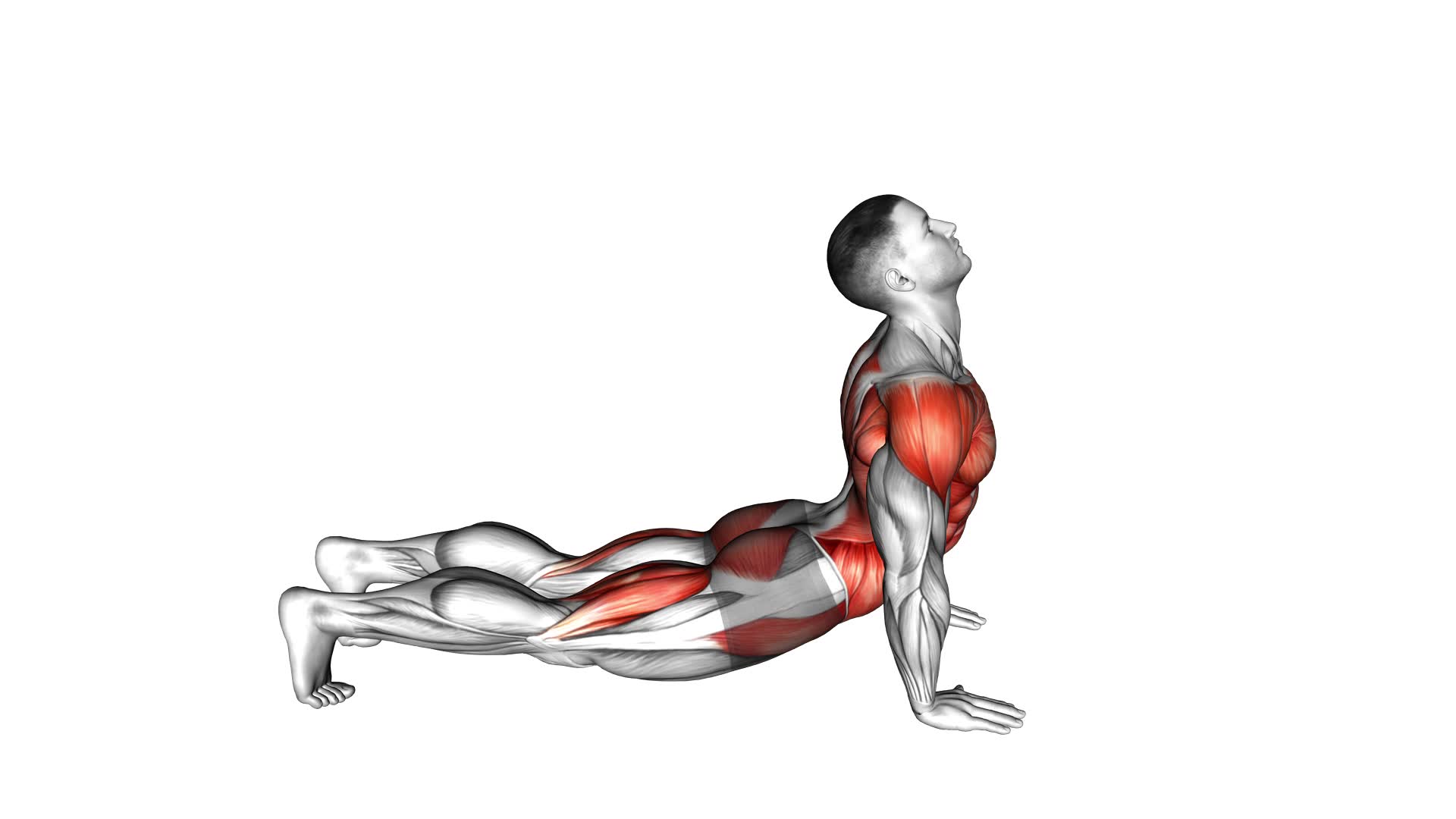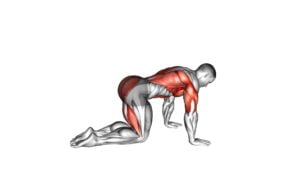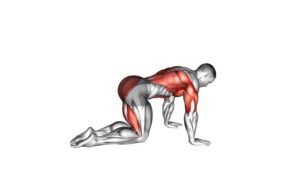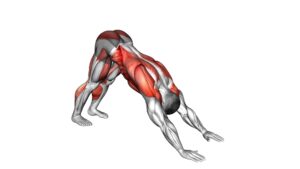Down to Upward Dog – Video Exercise Guide & Tips

Are you ready to take your yoga practice to the next level?
Watch This Exercise Video
In this article, we'll guide you through the Down to Upward Dog transition with a helpful video exercise guide and valuable tips.
Learn the proper technique, avoid common mistakes, and discover modifications for beginners.
Advanced practitioners will also find useful tips to enhance their practice.
Get ready to strengthen your body and find balance with Down to Upward Dog!
Key Takeaways
- Down to Upward Dog and Upward Dog practice enhances strength and flexibility.
- The transition and practice of these poses improve breath control and focus.
- The muscles along the spine are strengthened and stretched through these poses.
- Practicing Down to Upward Dog and Upward Dog can improve posture, reduce the risk of back pain, and increase range of motion and fluidity in movements.
Benefits of Down to Upward Dog Transition
Experience the numerous benefits of the Down to Upward Dog transition in your yoga practice. This transition, when done correctly, can greatly enhance your strength and flexibility while also helping you stay focused on your breath.
The importance of breath control during the transition can't be stressed enough. As you move from the low plank position to Upward Dog, take a deep inhale, allowing your chest to expand and your spine to lengthen. This deep breath not only helps you maintain stability and control during the transition, but it also brings oxygen to your muscles, aiding in their activation and relaxation.
Building strength and flexibility in the spine is another key benefit of the Down to Upward Dog transition. As you move from the low plank to Upward Dog, you're extending your spine and engaging the muscles of your back. This movement helps to strengthen and stretch the muscles along your spine, improving your overall posture and reducing the risk of back pain. With regular practice, you'll notice an increase in your spine's range of motion and a greater sense of ease and fluidity in your movements.
Incorporating the Down to Upward Dog transition into your yoga practice not only adds variety to your routine but also offers numerous benefits for your body and mind. Remember to focus on your breath and engage your core as you move through this transition, and enjoy the strength and flexibility that it brings to your yoga practice.
Proper Technique for Down to Upward Dog
To perform the Down to Upward Dog transition correctly, follow these steps to ensure proper technique and maximize the benefits for your body and mind:
- Start in the Downward Dog position with your hands shoulder-width apart and your feet hip-width apart. Press your palms firmly into the mat and engage your core.
- As you exhale, shift your weight forward, bringing your shoulders over your wrists. Keep your elbows close to your body and lower yourself down, bending your elbows at a 90-degree angle.
- Inhale deeply and as you exhale, press through your palms, straighten your arms, and lift your chest up towards the ceiling. Keep your shoulders rolled back and down, and your gaze forward. This is the Upward Dog position.
Remember to pay attention to your downward dog alignment to ensure proper form and avoid strain on your wrists and shoulders. Make modifications as needed, such as bending your knees slightly or using blocks under your hands for support. Listen to your body and adjust the pose accordingly.
Common Mistakes to Avoid
One common mistake to avoid when transitioning from Down to Upward Dog is collapsing your shoulders forward. This can lead to poor alignment and put unnecessary strain on your neck and upper back. To prevent injuries and improve flexibility, it's important to maintain a strong and stable foundation throughout the movement.
Instead of collapsing your shoulders forward, focus on actively engaging your shoulder blades. As you transition into Upward Dog, draw your shoulder blades down and back, opening your chest and lifting your sternum towards the ceiling. This will help to maintain a neutral spine and prevent any excessive strain on your shoulders.
Additionally, be mindful of your neck position. Avoid dropping your head back and compressing the back of your neck. Instead, keep your gaze forward and your neck in line with your spine. This will help to protect your neck and ensure a safe and effective transition.
Modifications for Beginners
Start with a few simple modifications to make the Down to Upward Dog transition more accessible for beginners. As a beginner, it's important to focus on building strength gradually and avoiding unnecessary strain on your body. Here are three modifications to help you ease into this exercise:
- Start with a modified version of the pose: Begin by lying flat on your stomach with your hands placed beside your chest. Instead of straightening your arms and lifting your torso off the ground, simply press your hands into the floor and lift your chest slightly. This modification allows you to engage the muscles needed for Upward Dog while maintaining control and avoiding excessive strain.
- Use a block for support: Place a yoga block under your hands to provide additional support and stability as you transition into Upward Dog. This modification helps to alleviate any discomfort in your wrists and allows you to focus on building strength in your upper body.
- Bend your knees: If you're struggling to lift your entire body off the ground, try bending your knees and keeping your feet on the floor. This modification reduces the amount of strength required in your arms and shoulders, making the transition more accessible for beginners.
Tips for Advanced Practitioners
Enhance your practice with advanced techniques for Upward Dog.
As an advanced practitioner, you have mastered the basic form of Upward Dog and are ready to take your practice to the next level. One way to do this is by exploring advanced variations of the pose. These variations challenge your strength, flexibility, and balance, allowing you to deepen your practice and experience new sensations in your body.
One advanced variation of Upward Dog is the one-legged variation. In this variation, you lift one leg off the ground while maintaining the pose. This requires additional core strength and balance, and it also helps to open up your hips and stretch your hamstrings.
Another advanced variation is the arm balance variation, where you lift both legs off the ground and balance on your hands. This variation requires a strong upper body and core, and it can be quite challenging, but it's a great way to build strength and improve your overall stability.
In addition to advanced variations, advanced breathing techniques can also enhance your practice. One such technique is ujjayi breathing, also known as 'victorious breath.' This breathing technique involves constricting the back of your throat slightly as you inhale and exhale, creating a soft, ocean-like sound. Ujjayi breathing helps to regulate your breath, deepen your concentration, and generate internal heat in your body.
As an advanced practitioner, it's important to remember that these variations and techniques should be approached with caution and respect for your body. Listen to your body's signals and only go as far as feels comfortable for you. With consistent practice and mindfulness, you'll continue to progress and deepen your practice of Upward Dog.
Frequently Asked Questions
How Often Should I Practice the Down to Upward Dog Transition?
To maximize the benefits of the down to upward dog transition, it's important to practice regularly. By incorporating this movement into your routine, you can improve flexibility, strengthen your upper body, and enhance overall body awareness.
Consistency is key, so aim for at least 3-4 times a week. Remember to focus on proper form and alignment, as common mistakes in this transition include collapsing in the shoulders or sinking into the lower back.
Stay committed and watch your practice soar!
What Are the Benefits of Incorporating Down to Upward Dog Into My Yoga Routine?
Incorporating the Down to Upward Dog transition into your yoga routine has many benefits.
It can improve your flexibility and increase your strength. By moving from a downward-facing position to an upward-facing one, you engage and stretch different muscles in your body.
This helps to improve overall flexibility and build strength in your arms, shoulders, and core.
Can Down to Upward Dog Help Improve Flexibility and Strength?
Down to Upward Dog is a powerful yoga pose that can greatly improve your flexibility and build strength. By smoothly transitioning from the downward dog position to upward dog, you engage and stretch multiple muscle groups, including your arms, core, and back.
This movement helps to increase your range of motion and strengthen your muscles over time. Incorporating Down to Upward Dog into your routine regularly will lead to a more flexible and strong body.
Are There Any Specific Breathing Techniques I Should Follow During the Transition?
During the transition from Downward Dog to Upward Dog, it's important to focus on your breathing techniques. Proper alignment is key as well.
As you move from one pose to the other, inhale deeply through your nose, filling your lungs with air. Then, as you transition, exhale slowly through your mouth. This will help you stay centered and connected to your body.
Are There Any Precautions or Contraindications to Be Aware of When Practicing Down to Upward Dog?
Before starting the down to upward dog transition, it's important to be aware of any precautions or contraindications that may apply to you. This will help ensure a safe and effective practice.
Remember to listen to your body and modify the exercise as needed. If you have any pre-existing injuries or conditions, it may be wise to consult with a healthcare professional before attempting this movement.
Stay mindful and take care of yourself throughout the practice.
Conclusion
Incorporating the down to upward dog transition into your yoga practice offers numerous benefits. It can improve flexibility, strength, and posture. By following proper technique and avoiding common mistakes, you can ensure a safe and effective practice.
Beginners can modify the transition to suit their level. They can focus on building strength and gradually increasing flexibility. Advanced practitioners, on the other hand, can challenge themselves further by exploring deeper variations of the transition.
Regardless of your level, it's important to listen to your body. Pay attention to any discomfort or pain and modify the transition accordingly. Also, consistency is key. Regular practice will help you progress and reap the full benefits of this transition.
Lastly, remember to enjoy the journey of your yoga practice. It's not just about achieving the perfect pose, but also about the process and the self-discovery that comes with it. So, keep up the great work on your mat and keep evolving!

Author
Years ago, the spark of my life’s passion ignited in my mind the moment I stepped into the local gym for the first time. The inaugural bead of perspiration, the initial endeavor, the very first surge of endorphins, and a sense of pride that washed over me post-workout marked the beginning of my deep-seated interest in strength sports, fitness, and sports nutrition. This very curiosity blossomed rapidly into a profound fascination, propelling me to earn a Master’s degree in Physical Education from the Academy of Physical Education in Krakow, followed by a Sports Manager diploma from the Jagiellonian University. My journey of growth led me to gain more specialized qualifications, such as being a certified personal trainer with a focus on sports dietetics, a lifeguard, and an instructor for wellness and corrective gymnastics. Theoretical knowledge paired seamlessly with practical experience, reinforcing my belief that the transformation of individuals under my guidance was also a reflection of my personal growth. This belief holds true even today. Each day, I strive to push the boundaries and explore new realms. These realms gently elevate me to greater heights. The unique combination of passion for my field and the continuous quest for growth fuels my drive to break new ground.







